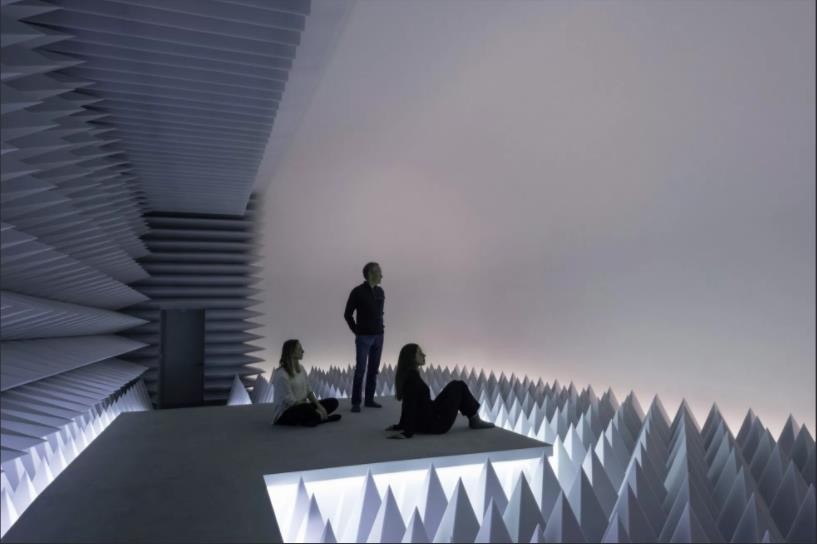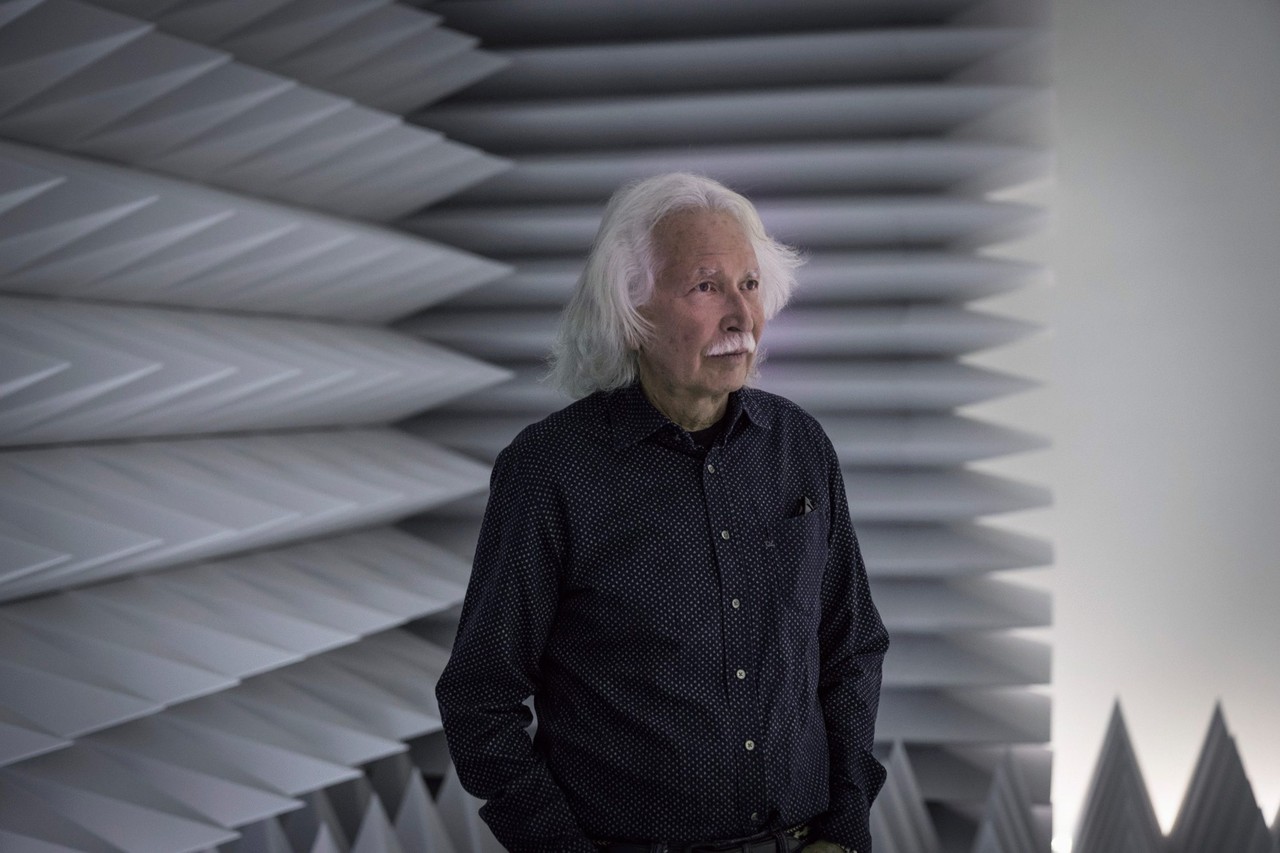Doug Wheeler
PSAD Synthetic Desert III
23 Mar - 02 Aug 2017

Installation view: Doug Wheeler: PSAD Synthetic Desert III, Solomon R. Guggenheim Museum, New York, March 24–August 2, 2017. Photo: David Heald

Installation view: Doug Wheeler: PSAD Synthetic Desert III, Solomon R. Guggenheim Museum, New York, March 24–August 2, 2017. Photo: David Heald

Doug Wheeler in his installation PSAD Synthetic Desert III at the Solomon R. Guggenheim Museum in 2017. Photo: David Heald
DOUG WHEELER
PSAD Synthetic Desert III
23 March - 2 August 2017
For PSAD Synthetic Desert III (1971), Doug Wheeler has altered the structure and configuration of a museum gallery in order to control optical and acoustic experience. He has transformed the room into a hermetic realm, a “semi-anechoic chamber” designed to minimize noise and induce a sensate impression of infinite space. Wheeler likens this sensation of light and sound to the perception of vast space in the deserts of northern Arizona. While Synthetic Desert is deeply grounded in the artist’s experience of the natural world, the work does not describe the landscape. Its form is strictly abstract.
Wheeler’s work is often associated with West Coast art after 1960, particularly a tendency referred to as Light and Space. The development of Light and Space coincides with Minimalism and shares with it a spare visual language of geometric form. During the early 1960s, Wheeler produced large white abstract paintings that explore pure optical experience. In the middle of the decade, he developed various techniques combining acrylic sheets, lacquer, and neon light, and used these methods in the fabrication of painting-like objects, including a series called “light encasements.” When installed in modified all-white rooms, the encasements emit a hazy luminosity that causes the planar surface of each work to appear fused with the wall. Wheeler abandoned object making altogether in the late 1960s to create immersive environments such as Synthetic Desert, using architectural volume, light, and sound as his primary mediums. The Guggenheim’s production of Synthetic Desert, based on early drawings and completed in close collaboration with the artist, is the first realization of this work.
Because Synthetic Desert is best experienced with as few extraneous sounds and distractions as possible, each visitation group is limited to five people. Timed tickets are required. Reserve tickets in advance. Walk-in tickets are available for select times.
This presentation of PSAD Synthetic Desert III is organized by Jeffrey Weiss, Senior Curator, and Francesca Esmay, Conservator, Panza Collection, with Melanie Taylor, Director, Exhibition Design. The Guggenheim is also working closely with Raj Patel and Joseph Digerness from Arup, a design firm that specializes in the acoustic properties of built space.
PSAD Synthetic Desert III
23 March - 2 August 2017
For PSAD Synthetic Desert III (1971), Doug Wheeler has altered the structure and configuration of a museum gallery in order to control optical and acoustic experience. He has transformed the room into a hermetic realm, a “semi-anechoic chamber” designed to minimize noise and induce a sensate impression of infinite space. Wheeler likens this sensation of light and sound to the perception of vast space in the deserts of northern Arizona. While Synthetic Desert is deeply grounded in the artist’s experience of the natural world, the work does not describe the landscape. Its form is strictly abstract.
Wheeler’s work is often associated with West Coast art after 1960, particularly a tendency referred to as Light and Space. The development of Light and Space coincides with Minimalism and shares with it a spare visual language of geometric form. During the early 1960s, Wheeler produced large white abstract paintings that explore pure optical experience. In the middle of the decade, he developed various techniques combining acrylic sheets, lacquer, and neon light, and used these methods in the fabrication of painting-like objects, including a series called “light encasements.” When installed in modified all-white rooms, the encasements emit a hazy luminosity that causes the planar surface of each work to appear fused with the wall. Wheeler abandoned object making altogether in the late 1960s to create immersive environments such as Synthetic Desert, using architectural volume, light, and sound as his primary mediums. The Guggenheim’s production of Synthetic Desert, based on early drawings and completed in close collaboration with the artist, is the first realization of this work.
Because Synthetic Desert is best experienced with as few extraneous sounds and distractions as possible, each visitation group is limited to five people. Timed tickets are required. Reserve tickets in advance. Walk-in tickets are available for select times.
This presentation of PSAD Synthetic Desert III is organized by Jeffrey Weiss, Senior Curator, and Francesca Esmay, Conservator, Panza Collection, with Melanie Taylor, Director, Exhibition Design. The Guggenheim is also working closely with Raj Patel and Joseph Digerness from Arup, a design firm that specializes in the acoustic properties of built space.
